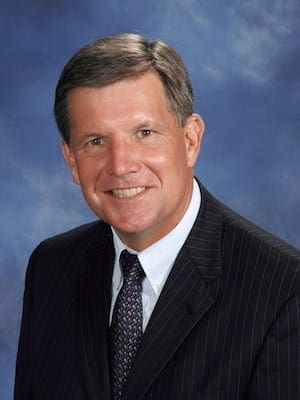One of the most enriching and fatiguing things about church life these days is the vast diversity within most local congregations.
During some recent days of self-reflection and ministry evaluation, I spent some time thinking about why I feel more fatigued these days than I did a few years ago.
There are likely many contributing factors including my age, my length of tenure and what Paul called “the daily pressure of my concern for the churches” (2 Corinthians 11:28).
But it dawned on me that a part of this new mental fatigue is caused by the continual task of navigating diversity within the church, a phenomena for which I was neither trained nor prepared.
To further process my notion, I started listing the ways the church is more diverse today than it was when I began my first tenure as a pastor.
I quickly identified 10 areas of church ministry that illustrate this proliferation of diversity:
1. Generational diversity: There are now four to six generations present on any given Sunday in many multi-generational churches.
2. Translation diversity: Rather than one standard Bible translation, members of my congregation read a variety of different Bible translations, and I am sure there are a dozen or more different translations present each time I preach.
3. Racial and ethnic diversity: There are multiple races, ethnicities and cultural backgrounds present within most congregations.
4. Worship time diversity: Many churches have multiple worship services.
5. Worship style diversity: Our church has two Sunday morning worship services, each involving a different style of worship.
6. Curriculum diversity: Rather than the standard denominational literature, there are multiple curricula used by Sunday school and Bible study groups in our church.
7. Missional partnership diversity: Rather than having a singular missional partnership, many of our churches contribute to and network with multiple mission partners.
8. Denominational background diversity: Years ago, it was a rare occurrence for a person to join our church from a different denomination, but today there are persons from various denominational traditions represented in our congregation.
9. Political diversity: In my first church, I would venture to say that the congregation was pretty evenly divided between the two primary political parties. Today, congregants may be affiliated with political parties, subsidiary groups within each party, PACS and lobbying groups.
10. Theological diversity: Multiple strands of theological influence, from both academic and folk theology, are represented in the DNA of most local congregations.
Unfortunately, there was no course offered in seminary titled Navigating Diversity.
Churches basically are going to do one of two things in regard to diversity. For one option, they will limit diversity by becoming a highly specialized and homogenized church. For example, they will focus on ministry to one or two generations, “only” allow one Bible translation or only promote one theological perspective.
The other option is they will embrace their diversity and leverage it for kingdom purposes.
Does this expanded diversity have a positive or negative affect on the congregation? I think it depends on how ministers and ministry leaders navigate the diversity.
From a potentially negative perspective, there are many ways diversity makes ministry more challenging:
1. It becomes more challenging to communicate across diverse platforms.
2. Planning a program of discipleship, ministry initiatives or activities for a diverse congregation can become cumbersome.
3. Navigating the tension created by extraordinary diversity can weary the staff.
4. The greater the diversity, the greater the potential for conflict.
But from a positive perspective, a high level of diversity provides many kingdom opportunities and benefits:
1. Those in a diverse congregation learn to respect varying points of view.
2. Multiple generations, ethnicities and spiritual backgrounds tend to provide multiple perspectives that enrich the overall ministry of the church.
3. If a diverse congregation is diligent “to preserve the unity of the Spirit in the bonds of peace” (Ephesians 4:3), that congregation can be a powerful witness to the transformative power of the gospel.
4. A diverse congregation usually is comprised of diverse spiritual gifts, talents and skill sets.
5. A highly diverse congregation is a vivid picture of the diversity of God’s universal family.
Local churches are more diverse today than at any point in their history. And indications are that diversity will increase exponentially.
To effectively navigate diversity, it is imperative for any church, especially a highly diverse congregation, to share a common commitment to following Jesus, to look to the Bible as their spiritual compass and to covenant to engage in worship and ministry in a sphere of mutual respect.
Ministers and church leaders are discovering that negotiating and arbitrating diversity in a “big tent church” is highly demanding, a task requiring nonpartisan pastoral guidance.
However, a church that embraces their diversity and learns to navigate it wisely may discover their diversity to be a wellspring of kingdom potential.
Barry Howard serves as the senior pastor of First Baptist Church of Pensacola, Florida, a leadership coach with the Center for Healthy Churches (CHC) and a board member of the Baptist Center for Ethics. A version of this article first appeared on the CHC blog and is used with permission. His writings also appear on his blog, Barry’s Notes. You can follow him on Twitter @BarrysNotes.
Pastor at the Wieuca Road Baptist Church in Atlanta. He also serves as a leadership coach and columnist for the Center for Healthy Churches. He and his wife, Amanda, live in Brookhaven, Georgia.

